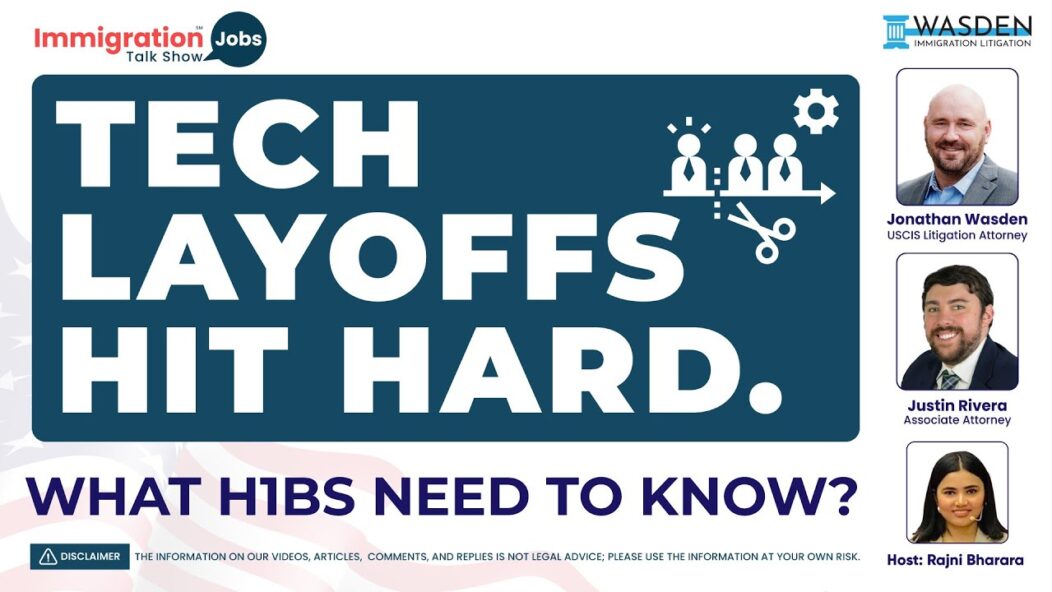The Adjustment of Status (AOS) process is a way for non-U.S. citizens to apply for a green card without leaving the United States. This guide will help you understand the fees, forms, and timelines involved in the AOS process. It is important to know these details to ensure a smooth and successful application.
Key Takeaways
- The Adjustment of Status process lets you apply for a green card while staying in the U.S.
- You need to submit Form I-485 along with other supporting documents for your application.
- There are various fees involved, such as filing fees and biometrics fees.
- Timelines for the AOS process can vary, but you should be prepared for a wait of several months.
- Employment-based AOS has specific categories like EB-1, EB-2, and EB-3, each with its own requirements.
Understanding the Adjustment of Status Process
The Adjustment of Status (AOS) process is a critical pathway for many immigrants seeking to become lawful permanent residents of the United States. This section will provide an overview of what the process entails, who is eligible, and the key benefits of pursuing this route.
Definition and Importance
Adjustment of Status is the procedure that allows an individual to apply for lawful permanent resident status (a Green Card) while being present in the United States. This process is crucial because it enables applicants to stay in the country legally while their application is being processed. Unlike consular processing, which requires applicants to apply for a visa outside the U.S., AOS offers the convenience of remaining in the country.
Eligibility Criteria
To be eligible for Adjustment of Status, applicants must meet specific criteria:
- Lawful Entry: The applicant must have been lawfully admitted into the United States.
- Visa Availability: A visa number must be available in the appropriate category.
- No Violations: The applicant must not have violated the terms of their current visa status.
Additional eligibility requirements may apply depending on the specific visa category under which the applicant is applying.
Key Benefits
The Adjustment of Status process offers several significant benefits:
- Legal Stay: Applicants can remain in the U.S. while their application is processed.
- Work Authorization: Applicants can apply for an Employment Authorization Document (EAD), allowing them to work legally in the U.S.
- Advance Parole: Applicants can apply for advance parole, which permits them to travel outside the U.S. and return without affecting their AOS application.
The Adjustment of Status process is a valuable option for those who meet the eligibility criteria, offering the convenience of staying in the U.S. while pursuing permanent residency.
Required Forms for Adjustment of Status
Form I-485
Form I-485, also known as the Application to Register Permanent Residence or Adjust Status, is the primary form used in the adjustment of status process. This form allows individuals already in the U.S. on a different visa to apply for permanent residency without leaving the country. It requires detailed information about your personal background, current status, and eligibility.
Supporting Documentation
When filing Form I-485, you must include several supporting documents to prove your eligibility. These documents typically include:
- Birth certificate
- Passport biographic page
- Marriage certificate (if applicable)
- Employment verification letters
- Medical examination report (Form I-693)
Filing Tips
To ensure a smooth filing process, follow these tips:
- Double-check all forms for accuracy.
- Include all required supporting documents.
- Pay the correct filing fee.
- Make copies of everything you submit.
- Consider seeking professional legal assistance to avoid mistakes.
Ensuring your response to a USCIS RFE is complete and accurate can help avoid delays or denials. Address all points raised and follow up if no update is received within 94 days.
Costs Associated with Adjustment of Status
Navigating the costs associated with the Adjustment of Status (AOS) process is crucial for applicants. Understanding these expenses can help you plan better and avoid unexpected financial burdens. Below, we break down the primary costs involved in the AOS process.
Filing Fees
The primary cost for adjusting your status is the filing fee for Form I-485. As of now, the fee is $1,140 for most applicants. However, this fee can vary based on age and other factors. It’s important to check the latest fee schedule on the USCIS website.
Biometrics Fees
In addition to the filing fee, applicants are required to pay a biometrics fee of $85. This fee covers the cost of fingerprinting, photographing, and background checks. Biometrics appointments are a mandatory part of the AOS process.
Additional Costs
There are other costs to consider, such as:
- Medical Examination Fees: These fees vary depending on the medical provider and are not included in the filing fee.
- Legal Assistance: Hiring an immigration attorney can add to your expenses but can be invaluable in navigating the complex AOS process.
- Translations and Document Preparation: If your documents are not in English, you will need to pay for certified translations.
It’s essential to budget for these additional costs to avoid any delays in your application process.
By understanding and preparing for these costs, you can better manage the financial aspects of your Adjustment of Status application.
Timelines and Processing Times
The journey to adjust your status and obtain a green card can vary greatly in duration. Processing times depend on several factors, including the type of green card you are applying for and your location. Below, we break down the key stages and their typical timelines.
Initial Filing to Receipt Notice
Once you submit your application, you will receive a receipt notice from USCIS. This usually takes about 2 to 3 weeks. This notice confirms that your application has been received and is being processed.
Biometrics Appointment
After receiving your receipt notice, the next step is the biometrics appointment. This is typically scheduled within 5 to 8 weeks of your initial filing. During this appointment, your fingerprints, photograph, and signature will be collected.
Interview Scheduling and Final Decision
The final stage involves an interview at a USCIS office. The timing for this can vary widely. For family-based applications, the interview is usually scheduled within 6 to 12 months after filing. Employment-based applications might take longer, often 12 to 24 months. After the interview, you will receive a decision on your application.
The entire process, from initial filing to final decision, can take anywhere from several months to multiple years, depending on your specific circumstances and the type of green card you are applying for.
Employment-Based Adjustment of Status
EB-1, EB-2, and EB-3 Categories
To qualify for an employment-based green card, you must have an EB-1, EB-2, or EB-3 visa. Each category has specific requirements:
- EB-1: For individuals with extraordinary abilities, outstanding professors, researchers, or multinational executives.
- EB-2: For professionals with advanced degrees or exceptional abilities in the arts, sciences, or business.
- EB-3: For skilled workers, professionals, and other workers.
Concurrent Filing Options
Concurrent filing allows you to submit your Form I-485 (Adjustment of Status) and Form I-140 (Immigrant Petition) at the same time. This can save a considerable amount of processing time. However, this option is only available if a visa number is immediately available for your category.
Maintaining Nonimmigrant Status
While your adjustment of status application is pending, it’s crucial to maintain your nonimmigrant status. If you fail to do so, you may be subject to removal from the U.S. Maintaining your legal status ensures that you remain eligible for the adjustment of status process.
Remember, the longer it takes to process your application, the higher the chances it will be denied. Meeting all requirements increases your chances of being granted permanent residence within a year.
Post-Approval Steps and Considerations
Receiving Your Green Card
Once your I-485 is approved, you will receive your green card in the mail, usually within a few weeks. This card allows you to live and work in the U.S. indefinitely. Make sure to keep it in a safe place and carry it with you when traveling.
Employment Authorization Document (EAD)
If you applied for an Employment Authorization Document (EAD) along with your I-485, you should receive it shortly after your green card. The EAD allows you to work legally in the U.S. while your green card is being processed. Keep in mind that your green card will replace the EAD once it arrives.
Travel Documents and Advance Parole
If you plan to travel outside the U.S. before receiving your green card, you will need an Advance Parole document. This document allows you to re-enter the U.S. without jeopardizing your adjustment of status application. Always carry your Advance Parole document and other identification when traveling internationally.
It’s crucial to stay informed about the latest immigration policies and procedures to ensure a smooth transition to permanent residency.
Monitoring Your Application Status
Checking Online Status
To keep track of your application, use the USCIS online case status portal. Enter your receipt number to get real-time updates. This tool is especially useful for staying informed about any changes or requests for additional information.
Understanding USCIS Updates
USCIS will send you updates about your application. These updates can include receipt notices, biometrics appointments, and interview schedules. Staying informed can make your path smoother and help you avoid unnecessary delays.
Responding to Requests for Evidence (RFEs)
If USCIS needs more information, they will send you a Request for Evidence (RFE). An RFE is not a denial but a request for more details. Respond promptly and thoroughly to avoid delays. Effective communication and organization are crucial throughout the process.
Common Challenges and How to Overcome Them
Navigating the Adjustment of Status process can be complex and fraught with challenges. Here, we discuss some common issues applicants face and provide strategies to overcome them.
Delays and Denials
One of the most frustrating aspects of the Adjustment of Status process is dealing with delays and denials. Delays can occur at various stages, from initial filing to final decision. Denials can be due to incomplete forms, missing documentation, or ineligibility.
To mitigate these issues:
- Ensure all forms are filled out completely and accurately.
- Submit all required supporting documents.
- Regularly check your application status online.
- Respond promptly to any Requests for Evidence (RFEs).
Legal Assistance and Resources
Seeking legal assistance can be invaluable in navigating the Adjustment of Status process. Immigration attorneys can provide expert advice, help prepare your application, and represent you in case of issues.
Consider the following resources:
- Immigration attorneys: They can offer personalized guidance and support.
- Online forums and support groups: These can provide community support and shared experiences.
- Official USCIS resources: Always refer to the official USCIS website for the most accurate and up-to-date information.
Staying Informed on Policy Changes
Immigration policies and procedures can change frequently. Staying informed is crucial to ensure your application complies with the latest requirements.
To stay updated:
- Subscribe to USCIS updates.
- Follow reputable immigration news sources.
- Maintain regular communication with your legal advisor.
Staying proactive and informed can significantly reduce the risk of delays and denials in your Adjustment of Status application.
Facing challenges in immigration can be tough, but you don’t have to go through it alone. Whether it’s a denied application or a long delay, our team is here to help. Visit our website to learn more about how we can assist you in overcoming these hurdles. Don’t wait, take action now!
Conclusion
Navigating the Adjustment of Status process can seem overwhelming, but understanding the steps, fees, and timelines can make it more manageable. By staying organized and informed, you can increase your chances of a successful application. Remember to keep track of your documents, follow the guidelines, and seek professional help if needed. With patience and careful preparation, you can achieve your goal of obtaining a green card and starting a new chapter in the United States.
Frequently Asked Questions
What is Adjustment of Status (AOS)?
Adjustment of Status (AOS) is a process that allows you to apply for a green card while staying in the United States. It means changing your status from a temporary visa holder to a permanent resident without having to return to your home country.
Who is eligible for Adjustment of Status?
To be eligible for AOS, you must be physically present in the United States and have a valid visa. You also need to meet certain criteria based on family, employment, or other special categories.
What forms do I need to file for Adjustment of Status?
The main form you need to file is Form I-485. You will also need to submit supporting documents like your birth certificate, passport, and proof of your current visa status.
How much does it cost to file for Adjustment of Status?
The filing fee for Form I-485 is $1,140. Additionally, there is an $85 biometrics fee for fingerprinting and background checks. Other costs may include medical exams and legal fees.
How long does the Adjustment of Status process take?
The AOS process can take anywhere from 8 to 14 months. This includes time for receiving your receipt notice, attending your biometrics appointment, and going to your final interview.
What happens after my Adjustment of Status is approved?
Once your AOS is approved, you will receive your green card in the mail. You can then live and work permanently in the United States. You may also apply for an Employment Authorization Document (EAD) and travel documents like Advance Parole.
Contact Us
For more information or to schedule a consultation, visit our website at Wasden Law, Our experienced litigation attorneys are ready to fight for your rights and ensure your immigration journey is as smooth as possible.
🔍 Have questions or need advice? Drop a comment below! Our team is here to help. 🗣️💬
✉️ Connect with us for personalized guidance and support. Let’s navigate your immigration journey together. 🌐📩
💡 Curious about your specific case? Ask us in the comments and get expert advice tailored to your needs. 🧑⚖️📝
Disclaimer:
The information provided in this article is for general informational purposes only and does not constitute legal advice. While we strive to ensure the content is accurate and up-to-date, it is not a substitute for professional legal consultation. Immigration laws and regulations are subject to change, and their application can vary based on specific circumstances. We recommend scheduling a consultation with us to obtain advice tailored to your individual situation. The authors and publishers of this article are not responsible for any actions taken based on the information provided herein.
How useful was this post?
Click on a star to rate it!









